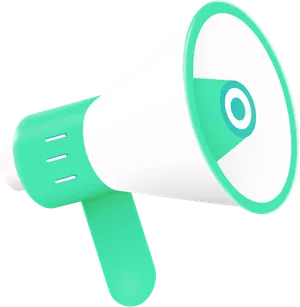Shopify Link Building
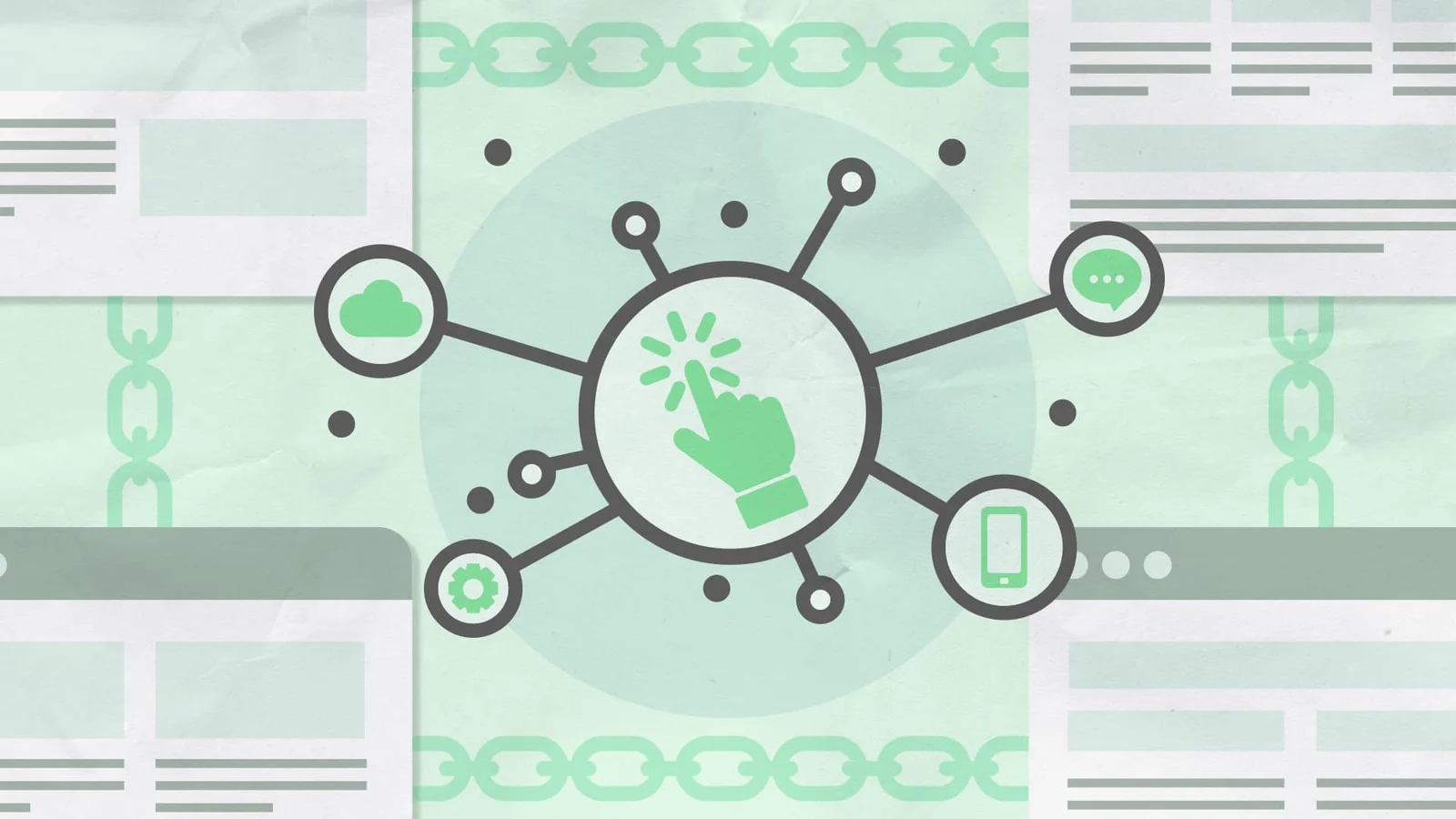
This article is Chapter 6 of our 288-page Shopify SEO guide.
Check out the full eBook.Once your on site factors are sorted, you’ve got to start looking at off page signals like backlinks.
This is no different for Shopify than any other type of website.
But the strategy is a little different for eCommerce, let’s break down how I recommend doing this.
What is link building?
Link building is the process of acquiring backlinks to your website. Backlinks are hyperlinks from other websites.
While the importance of backlinks has arguably lowered in recent years, it’s still a hugely important signal of trust and authority. The fact many other websites link to yours, signals they trust/like/vouch for your content therefore are recommending it to their own visitors.
Look at any top ranking website for any remotely competitive keyword, you’ll usually find they have hundreds (if not thousands) of websites linking to them.
Which pages to build backlinks to
One important decision you’ll need to make over deliberate link building is which page to point the links at.
The main decision being between bottom of funnel (i.e. product or product category pages) or mid/top of funnel (i.e. content).
The actual answer is that it depends on what works for your competitors. But the easy answer is that backlinks tend to be more effective when pointed at the page you intend to rank i.e. your product category pages (usually).
This can be determined with a very simple link gap analysis.
Let’s say we want to rank for the keyword “office chairs”, here’s a quick Ahrefs SERP analysis:

Here’s what we can see here:
- Domain rating (DR) is the overall authority/power of the website and Domains is the number of different websites linking to this specific page
- If you’re furniture-work.co.uk, you should be considering that the top site only has 12 more referring domains than you, so you can build more backlinks to this page, but you may also want to consider other pages
- However if you’re officefurnitureonline.co.uk, there’s a lot more room to build backlinks to this specific page
- Another consideration is that many pages like Dunelm, John Lewis, and Wayfair have much less links; however, these should be ignored as they’re significantly higher DR
This is an example of a very simple link gap analysis, the point is we’re determining our strategy based on the competition.
Link building factors
If we get into the details, there’s a lot of factors that influence the quality of a backlink.
DoFollow vs NoFollow
If you don’t trust a website, you can mark it as “nofollow”.
This doesn’t completely remove the value of the link, but makes it much less effective than a standard dofollow link.
There’s also variations of this like sponsored, which act similar to nofollow.
If you’re doing link building, make sure you’re not putting in all this effort for nofollow or sponsored links.
Anchor Text
The anchor text is the text of the link, this is one of the ways search engines can determine the relevance.
If the anchor text is click here, it’s quite vague. But if it’s office chairs, clearly I’m linking to a page about office chairs.
This is an important factor so make sure you’re planning this when building links. Also be careful not to be overly aggressive in optimising this, that can look unnatural and cause issues too.
Relevance
Beyond anchor text relevance, there’s relevance of the actual page linking to you and relevance of the overall website containing that link.
A link from the BBC may be great, but if I run a clothing store I want a link from a huge clothing website like ASOS.
It’s not necessarily the strongest or biggest website that’s better, as relevance is also weighed into the effectiveness of a link.
Domain Rating
Presuming relevance is considered though, you should consider the Domain Rating (DR) or Domain Authority (DA).
These are all different ways of measuring the authority of the overall website.
Generally speaking, the higher the better presuming it hasn’t been manipulated and follow other factors mentioned here.
URL Rating
Beyond the overall domain authority, you also have a URL Rating (UR) or Page Authority (PA).
This is a measure of how much of an authority the specific page linking to you has.
I don’t particularly worry about this, but generally speaking if the page has a great piece of content, then it’ll get internal links from other pages on their website and backlinks from other websites.
Both of these things result in a better backlink for you.
Linked Page
The final factor I’d strongly consider is which page you’ll be linking to.
For the most effectiveness, always link to the specific page you would like to rank.
But as explained in the “Which pages to build backlinks to” section, you want to make sure it’s not too different from competitors. If they have 10 links to the page, but you have 100, it looks odd.
How to do link building for Shopify stores
For Shopify, there’s only 3 core strategies I’d recommend using for building links:
1. Business Directories
For brand new websites, you need some presence online.
I’ll presume you’re already going to create social media profiles, therefore my recommendation for additional presence and starter links is registering to business directories like Yellow Pages, Yelp, and local or industry specific ones.
These won’t help you rank, but it’s a starting point as part of an overall backlink profile.
For existing businesses with websites for many years, you likely have links like this that naturally occurred over time.
2. Outreach Links
Outreach is where you connect with webmasters, bloggers, and writers to persuade them into linking to your website.
The actual persuasion element is usually an incentive in the form of payment, mutual value (i.e. helpful for their visitors), promotion, or similar.
This is our bread and butter approach to backlinks.
We can email websites and offer to write content for their blog, pay to get a link within existing content, send them a free product in exchange for link, improve their resource list with our amazing content/tool, etc.
For example, for this Shopify SEO training I may send an email like:
*Hey [NAME], Awesome job with your Shopify setup guide. You really break down every step well and I’m loving the clean design for your blog articles, super easy to read. I noticed you didn’t mention a few SEO fixes that can be fixed upfront to prevent future issues, like:
- Canonicalising product tags
- Noindexing Vendor collections
- Noindexing blog tags I actually have an amazing (yes, I’m biased) tutorial that breaks these down: [LINK] Maybe your visitors would benefit from adding these to your checklist, with a link to the tutorial for fixing them?
Or let me know if there’s another way I can help out.
Cheers, Daryl*
3. Amazing Content
To make your outreach as effective as possible, you should create *amazing *content.
If your content is unique, more detailed, more visually appealing; or better in any way then it’ll naturally attract links.
This can be collection and product pages, though generally they’re much more difficult to acquire links to without guest posting or paying for them.
But blog content and tools are extremely easy.
Especially if you create “link bait”.
Let’s say you create a guide on how to buy an office chair, it may get links, but it’s not that exciting. There’s probably a hundred other guides on the topic.
However, if you conduct a study or collect research on how often the average person sits in their office chair, maybe broken down for different types of jobs. Along with research on the damaging effects of sitting - even if it’s not your own study/research. This could be cited by all types of websites including news outlets.
Calculators are another great example.
Sell mattresses? Create a calculator to determine how much sleep you should get or when the optimal time to sleep and wake up is.
That’s exactly what Nectar have done:
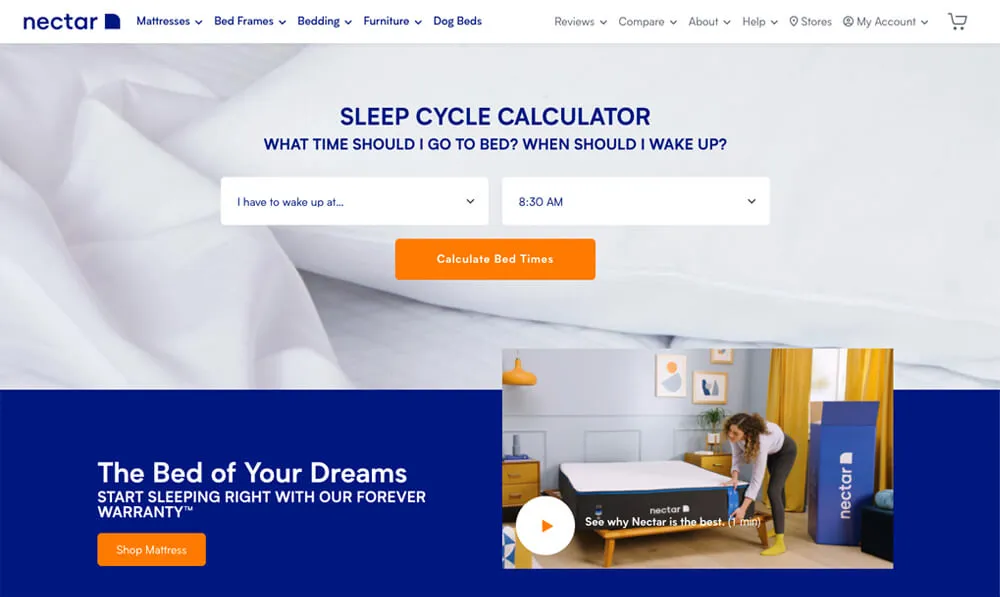
More importantly, look how effective it is for landing backlinks:
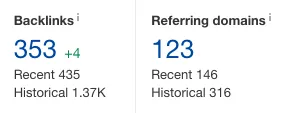
That’s 353 backlinks from 123 different websites.
Types of link building
Guest Posts
Got an idea for a piece of content that will work very well with someone else’s audience? Offer to write a guest post.
This is a great opportunity to not only get a link, but also build up your brand when done right.
For example, a guest post I wrote for Ahrefs (a popular SEO tool) has resulted in probably hundreds, if not many more, visitors to my website.
Mostly from this sidebar on the right of the article:
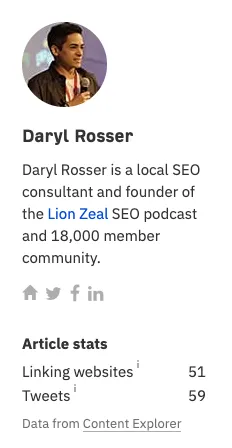
As you can see, the article was fairly popular with 51 linking websites and 59 tweets referring to it.
Blogger Links
If you don’t want to write a full article, or pay a writer, an easier alternative is blogger links. These may also be referred to as link insertions.
This is where you find a relevant blog with existing content that is relevant to your business, then you convince them to link to you.
The simplest form of incentivising here is payment, though of course other ways will work too.
Skyscraper
Skyscraper technique is an approach to landing free links by simply creating the best piece of content.
It’s based on the idea that if you have a taller skyscraper, everyone will immediately begin talking about you instead.
Except now you replace skyscraper with content.
Create the best piece of content in your niche, then approach websites linking to inferior content and suggest they link to you also.
Broken Link Building
As you probably know running an eCommerce store, it’s very difficult to stay on top of everything.
Sometimes products will go out of stock for a while, or permanently.
Rules or laws may change what you’re allowed to say, requiring a lot of content changes.
And over time you can potentially have hundreds of blog posts with various links all over the place.
This can result in broken links. Links that lead to a missing (404) page, which is a great opportunity for us.
Broken link building is where we find those broken links, then reach out and offer our content as a replacement.
An interesting starting point may be to look at your competitors broken backlinks.
In Ahrefs, you can do this under Site Explorer > Enter domain > Broken under Backlinks:
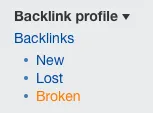
Then you’ll be given a list of all the broken backlinks to this website:
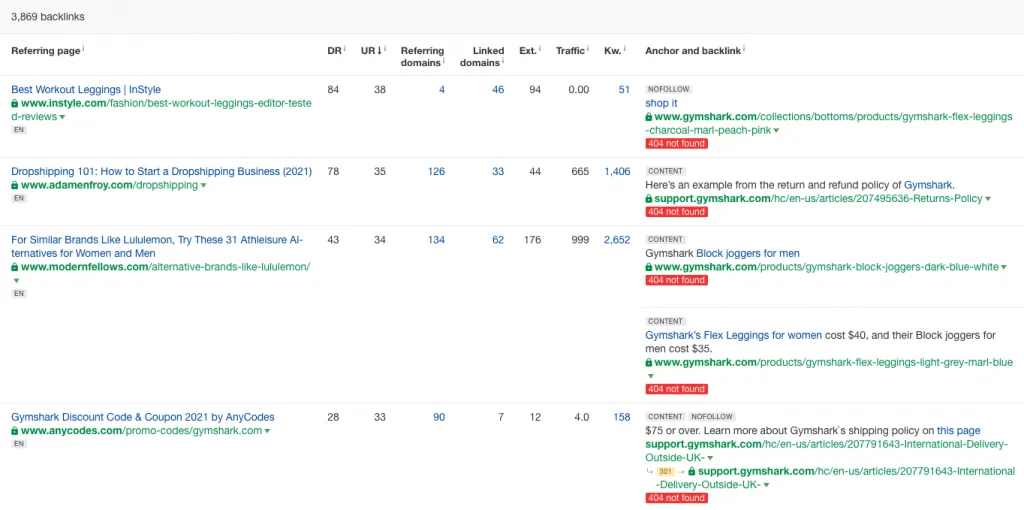
Now if you sell the same products or have similar (ideally better) content, why not reach out to these websites and offer to link to your better working page?
Unlinked Mentions
A great quick win is to find unlinked mentions of your brand name, then ask them to link to you.
Ahrefs Content Explorer is an easy way of doing this, do a search for your brand name in content, then select “highlight unlinked domains”:
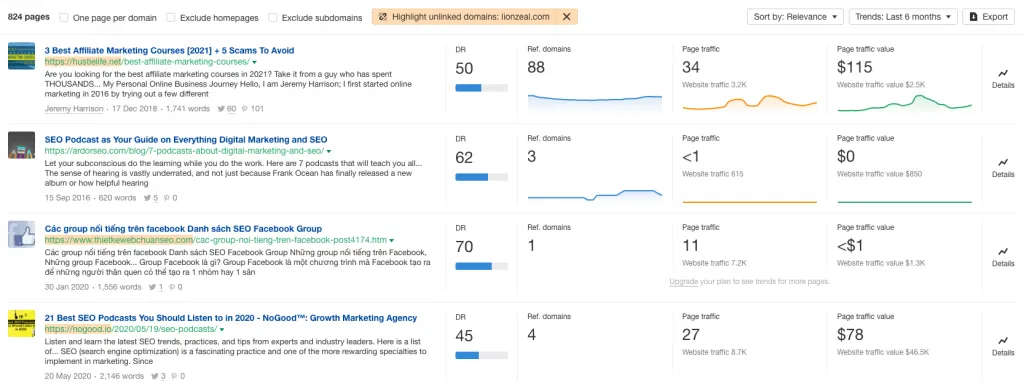
This gives us a list of websites that mention our brand name and highlights the ones that don’t link to us.
In this case, it’d probably be very easy to get links from these 3 highlighted websites by simply emailing them and asking.

How many backlinks do you need?
It depends.
As there’s many factors that influence SEO rankings, even the effectiveness of backlinks, it’s hard to pin-point an exact number.
We can estimate quite well though, based on analysing our top ranking competitors.
Let’s say our website has filtered results showing 105 referring domains in total (filtered by *DoFollow *and DR30+ to try reduce low quality backlinks from the count).
But let’s go ahead and apply that same criteria to a leading competitor. You can see they have 276 referring domains.
If we then checked an additional 2-3 competitors, we may see the average is more like 203.
In this case we know we need in the region of 98 referring domains.
Over 24 months, that’s 4 per month. Plus enough to keep up with the new backlinks our competitors are building every month.
Avoiding spam links
Hopefully this article gives you some context behind why backlinks are important, how to start building them, and how many you’ll need.
The thing you need to be extremely careful of though is spam links.
Yes, you can buy backlinks from Fiverr.
And you probably get spam messages daily trying to sell you backlinks. At least I do.
But these are almost all low quality links that will hopefully do nothing to your website, or worst case scenario, damage your rankings.
I’d recommend checking any website you’re looking for to check for things like:
- Is this a real website someone cares about?
- Check the wayback machine to see if the domain has been purchased and rebuilt
- Is the website relevant to your website? Not a general blog setup to sell links
- Does this website have real organic traffic?
- Is the organic traffic trending upwards? Or at least not declining?
- Does this website have high quality backlinks itself?
Ultimately, be careful you’re building high quality links. Blog comments, forum posts, social bookmarking sites, account profiles, and other spammy techniques like this will not help your rankings.
Final Thoughts
Despite the increasing importance of Technical SEO, On Page SEO, and content; backlinks are still a hugely important ranking factor.
Leaving this out of your SEO strategy is a mistake and will make competing that much harder.
Even if you don’t have a large budget for this, I’d look into some quick win options like unlinked mentions, broken link building, and the skyscraper technique if your content is amazing.
This combined with onsite changes will put you miles ahead of most.

